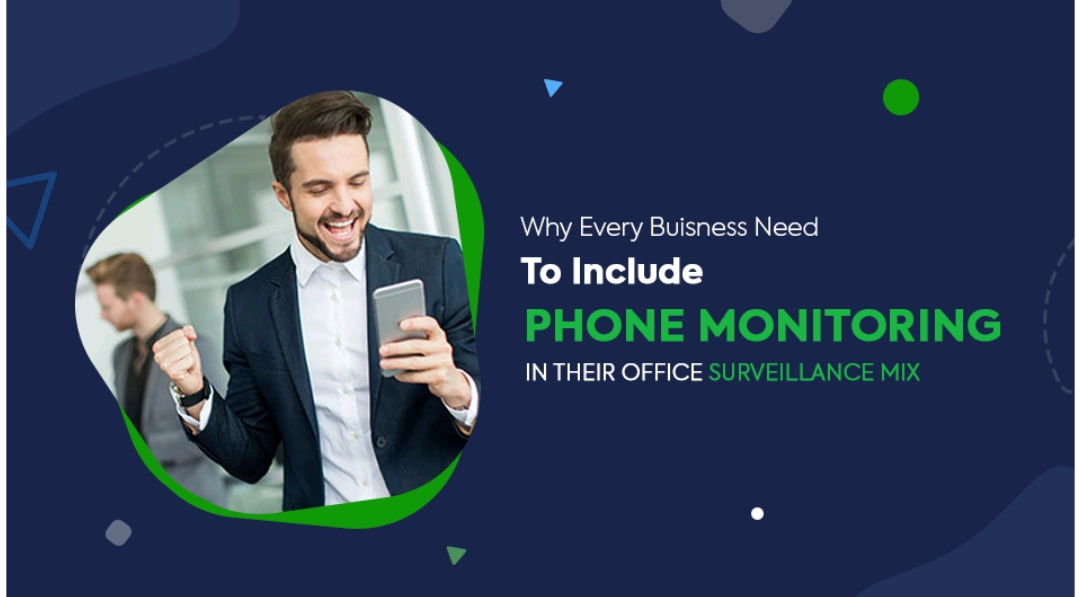Once upon a time, office surveillance systems marked a breakthrough in security and monitoring for companies worldwide. However, there are different types of office surveillance tools. Therefore, if you’re thinking about installing a new office surveillance system or upgrading an existing one, it’s vital to understand the benefits that such an office surveillance system may provide your company. Installing new office surveillance tools is all about safeguarding your company’s assets, including infrastructure.

Let us look at the types of office surveillance tools you can use and which is best for your business.
Types of Office Surveillance Tools
1. Phone Monitoring Software for Employees
Mobile spy apps are the best solution if you wish to monitor your employees. Mobile devices, such as smartphones and tablets, are increasingly being used by business owners to monitor commercial properties and keep them safe from fraudsters remotely. It is likely because employee monitoring apps give direct staff surveillance experience compared to other office surveillance tools.
They also give you a stealthy approach to keep tabs on your workers, and you can use them for all office security purposes! A good employee monitoring software should include location tracking, remote control, and distinguishing between unproductive and productive activities.
The best Android and iPhone spy app you can use for monitoring your employee activities is Xnspy. It’s also one of the most budget-friendly employee monitoring applications available worldwide. Because it works with all Android and iOS devices, the software has gained tremendous popularity among companies. It implies that employers need not update their workers’ cellphone operating systems for the software to work. Xnspy has several unique features that make staff monitoring easy. Some of them are listed below.
Features:
- Track all of their emails, including the identities and email addresses of the senders.
- Keep an eye on the locations you’ve added to your Watchlist and get alerted when they change.
- Listen to their phone recordings or record their phone calls. Perfect for keeping track of all of your essential information.
- Set alert phrases, places, or people critical to the business using XNSPY’s alert notification function.
- Send commands to a monitored device for surround recording, app blocking, snapshots, and locking and resetting.
- View their daily online surfing habits or preferred callers, as well as a straightforward interpretation of punchcard activities.
- View the names and locations of the Wi-Fi networks they use throughout the day.
- Track keystrokes from all social media platforms.
- In an innovative, reader-friendly approach, verify all phonebook entries from distant.
To learn about its pricing and compatibility, visit the app official websitehttps://www.xnspy.com/
2. CCTV cameras
CCTV cameras for video surveillance is one of the most prevalent types of surveillance equipment used in today’s workplaces. This type of office surveillance tool is used by many businesses to avoid misbehavior and ensure staff safety. Although CCTV cameras can indicate whether or not your staff is at their desks, they cannot tell you whether or not they are productive. If you choose to set up a CCTV camera, ensure it doesn’t capture your employees’ computer displays directly since this might infringe on their privacy. In addition to using this surveillance tool, you can use your workplace monitoring equipment to assist you in spotting any apparent misconduct or possible security threats. Also, keep in mind that it is best you set up CCTV cameras in general parts of the workplace; employee surveillance in private areas such as restrooms is always prohibited.
3. Keycards
Keycards can be used to protect trade secrets. Many firms, particularly those with a high level of security, utilize keycards. Because these keycards are connected to their owners, you may customize each employee’s security settings. Employees are usually restricted from accessing illegal areas in the company using keycards. For example, a keycard sensor can be installed at every entry point in your company, allowing only those with approved keycards to pass through. You may also use it to track your staff attendance or where they are physically in the workplace. On the other hand, Keycards can’t tell you if your workers are genuinely working or merely loitering at their desks. It also doesn’t assist with remote work monitoring.
4. Biometric Terminals
These office surveillance tools are ideal for businesses that require extreme security. Iris scanners or Fingerprints are installed on doors leading to restricted locations in these systems. They’re more secure than keycards since they’re less prone to theft and data breaches. However, you can only use them to keep employees out of limited locations.
Benefits of Using Office Surveillance Tools
Many businesses maintain track of their employees’ activities to keep them focused and increase productivity. Employee surveillance isn’t straightforward to implement. You’ll have to obey government regulations while doing it. However, there are numerous advantages of monitoring your staff that will make an effort worthwhile.
1. Improves employee productivity
During their working hours, most employees squander some time caused by various causes, including social media or other coworkers. While being distracted at work is expected, the issue is compensating your staff for their lost time. Furthermore, all of that squandered time lowers your company’s productivity. Using office surveillance tools helps you pay your employees solely for tasks while simultaneously increasing your organization’s general productivity.
2. A Greater Degree of Transparency
Managing staff is not without its difficulties. Most of the time, you won’t know when your workers begin working if they’re working or spending time on social media and how much time they spend managing projects. It may lower your employee’s productivity since they may find it difficult to justify why one activity took longer than others. However, you may avoid most of these difficulties with a sound staff monitoring system.
3. Improved Employee Performance Insights
Monitoring employee activity has a dual purpose: it keeps them focused on their job and keeps you informed about what they’re planning. Keeping track of your team’s performance at work offers you access to a wealth of data that was previously unavailable. You may use this information to address idle time, improper behavior, and data security in the workplace. But, more significantly, it assists you in determining the level of productivity of each individual. You’ll be able to distinguish your top-performing staff from the rest this way. You may then recognize high-performing staff and provide failing team members with the resources they need to get back on track.
4. There will be no more constant physical supervision
Constant physical supervision can make your employees feel uncomfortable. As a result, it has the potential to lower staff morale. However, if you don’t have a sound employee monitoring system in place, you’ll have to watch your staff know what they’re doing continually. Poor management may result as a result of this. By using office surveillance tools, you’ll always know what your team is up to with a complete employee monitoring system – without succumbing to constant physical supervision. You may put the time you’d typically spend monitoring to better use, such as project planning or staff training.
You can also read: My Hero Academia Season 5 Episode 23 Release Date





